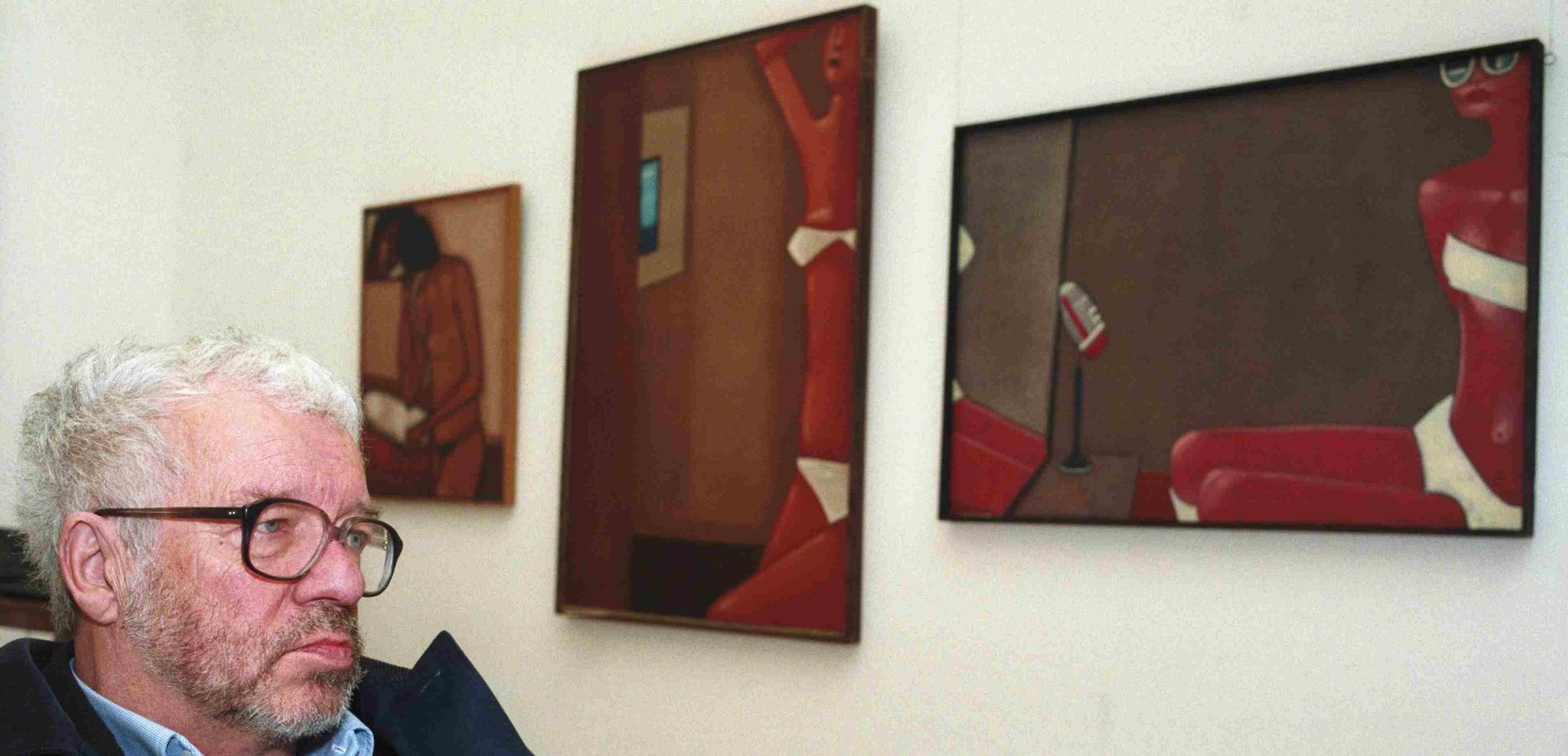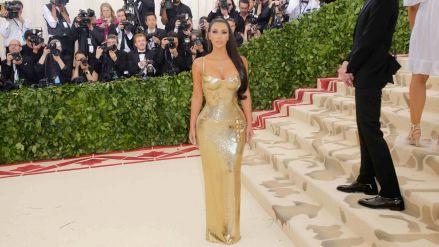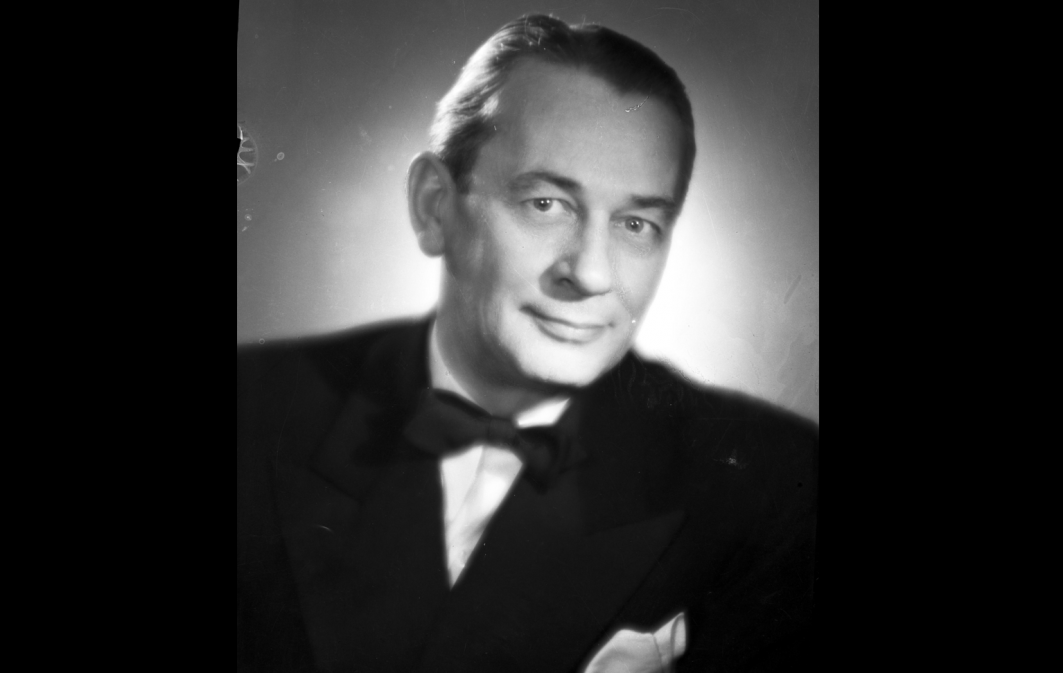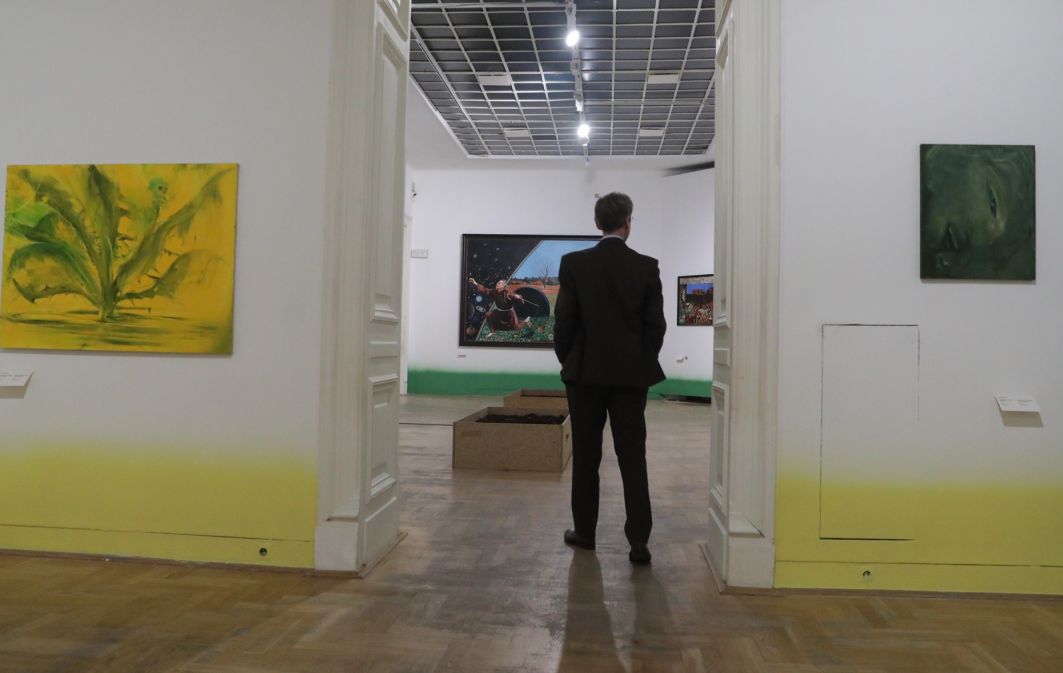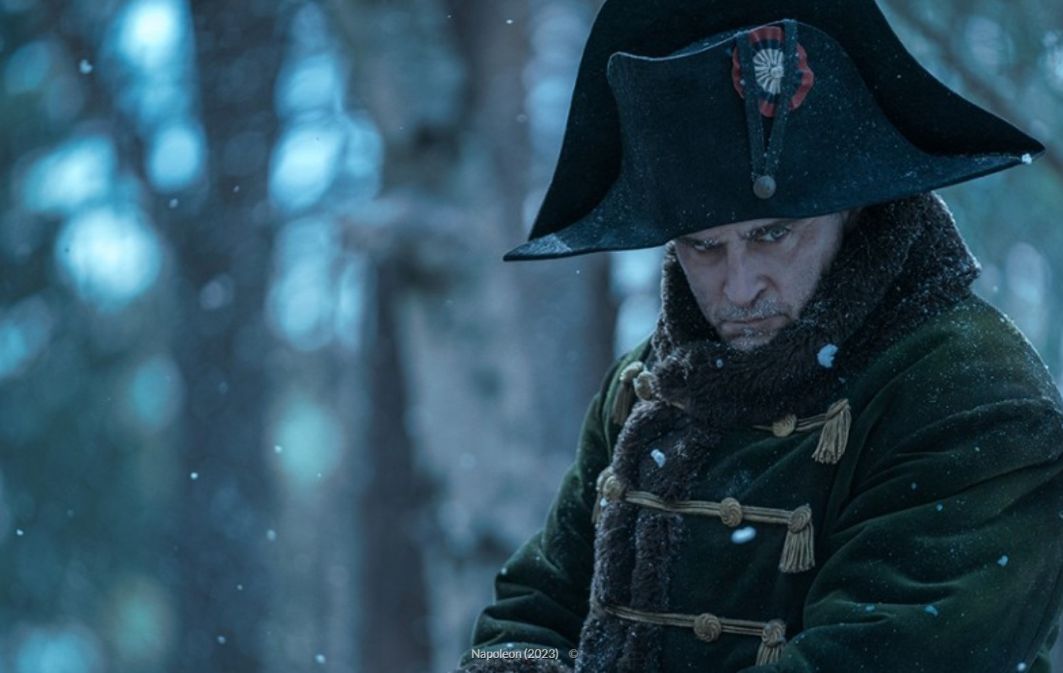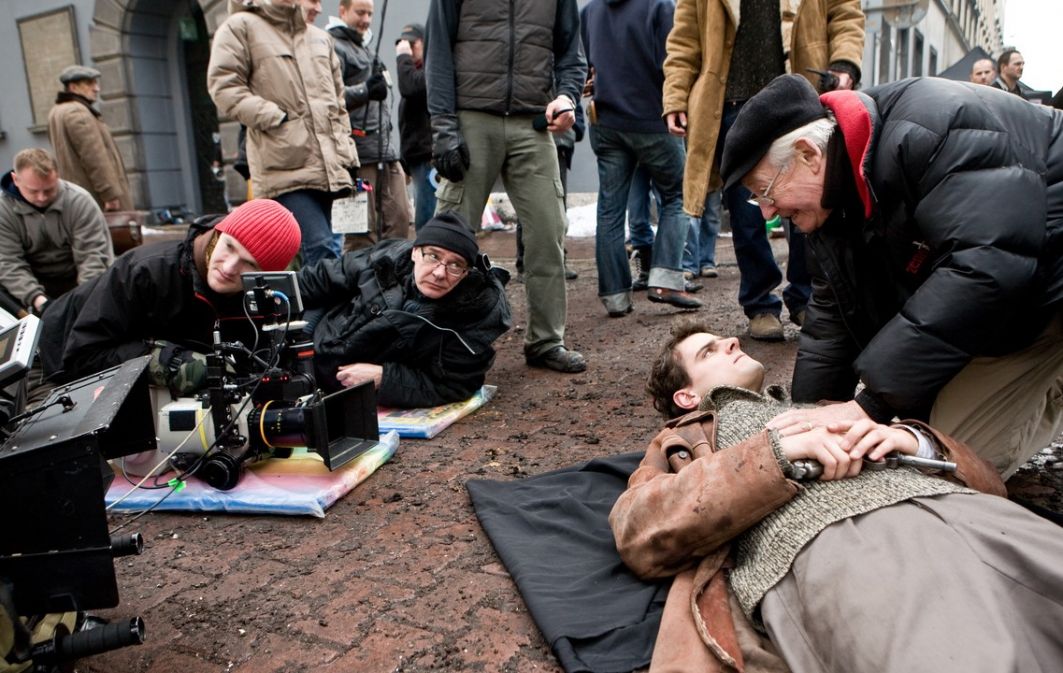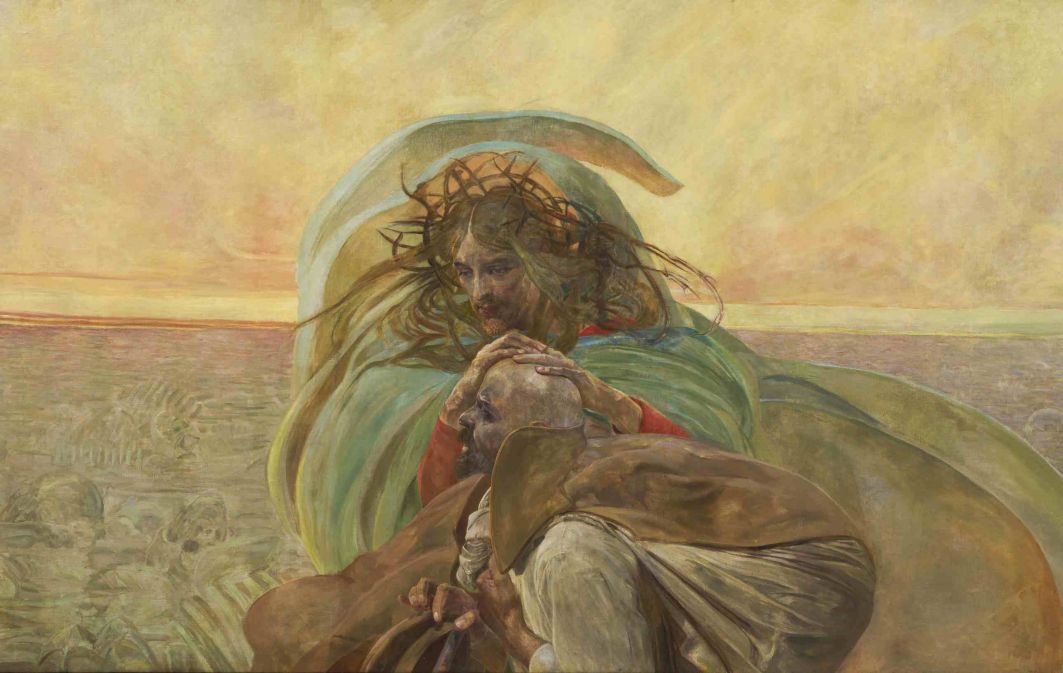Nowosielski happily took part in exhibitions, the paintings repeatedly shown at Zachęta attracted crowds, the exhibition “Seeing and Understanding” organized in the Sukiennice was no less successful, where the artist’s paintings were shown next to compositions by Brzozowski, Kantor, Stanisław Fijałkowski and Ryszard Winiarski, and numerous awards and distinctions confirmed his unthreatened position.
“Secular” icons surpassed paintings painted years ago, and women shown from behind have forever entered the canon of contemporary culture. He no longer had to prove to anyone that he was a champion of the same class as Amadeo Modigliani.
Nowosielski experimented eagerly, for example replacing the dark lines dividing even surfaces with pitch black. Bright, synthetically illuminated lines derived from black and red, and lines superimposed on framed figures are typical of the painter’s latest style. Colours coming from the darkness and beyond, complementing symmetrical lines, shiny, ecstatic colours compared to rubies found in Asia, gave the characters a tired look. Vivid colours that make you dance are a separate entity, feeding on emotions and opposing symbols. They identify with eternal truths, myths and dreams.
Resembling an image after the resurrection, the sun-burned bodies deserved separate contemplation. Filled with sadness, limited to symbols, the canvases are the painter’s personal vision, in which the interpenetrating reality and dreams gave the illusion of control over life and death. What did the artist say about these works?
“(...) in my artistic activity, or at least in my intentions, I take the opposite path, i.e. I try to transfer the most infernal elements of Eros and restore their metaphysical, spiritually positive meaning”.
A lifetime
In 2023, on the occasion of the 100th anniversary of the painter’s birth, many extraordinary exhibitions were opened in Warsaw, Kraków, Supraśl and Łódź, showing several dozen outstanding works from various periods of his work. Some of them in Warsaw’s Kordegarda - by the end of June 2023, the gallery’s collections were enriched with several unforgettable nudes. Among them are: “Gymnasts” and “Acrobats”, connoisseurs of still life enjoyed the works inspired by the paintings of Tadeusz Kantor, and urban landscapes completed the look of the exhibition.
Nowosielski’s work has been presented in a slightly different way at the National Museum in Kraków. Divided into three parts, the exhibition focused on landscapes, corporeality, forgotten and overlooked abstractions, but the most interesting part was the one devoted to icons. Anchored in spirituality, partly from the museum collection, and partly from Bishop Erazm Ciołek’s Palace, the works are surprising with their symmetry, lack of chiaroscuro, perspective, and only seemingly don’t fit into the abstract, alienated surroundings.
Since December 5, 2023, some of Nowosielski’s surprising pieces have been on display at the Royal Castle in Warsaw, alongside works by other artists.
The sacred and the profane interpenetrated, interacted with one another, and proved that only through emotions is it possible to interpret his symbolic, metaphysical art. Enchanted in stillness, the figures lived their own lives, motionless look, flat lines and big sphere separated with black strokes reflected “heavenly” painting in which heroes shared their thoughts on eschatology with the viewer. They expressed the fear that accompanied Nowosielski, they personified virtues and thought of the painter. They were alter ego of his, him having devoted his whole life to art.
–Małgorzata Giermaz
TVP WEEKLY. Editorial team and journalists
–Translated by Dominik Szczęsny-Kostanecki
Quotations in the text are taken from the following works:
Jan Gondowicz, „Nowosielski”, Warszawa 2006
Jarosław Suchan, „Dlaczego Grupa Krakowska?” [in:] „Grupa Krakowska”, Kraków 1998
Klaudiusz Święcicki, „W kręgu II Grupy Krakowskiej: środowisko radykalnej awangardy plastycznej wobec zmian społeczno-politycznych w Polsce w latach 1945-1958”, [in:] „Historia Slavorum Occidentis” 1(4), 89-110, Toruń 2013
https://vod.tvp.pl/programy,88/ktoredy-po-sztuke-odcinki,274079/odcinek-102,S01E102,329119, [access: 12.12.2023)
The exhibition of works by Jerzy Nowosielski at the Zachęta National Gallery of Art will run until February 4, 2024;
The exhibition „The Art of Seeing. Nowosielski and Others” at the Royal Castle in Warsaw will run until March 3, 2024.
